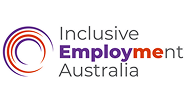
Why Diversity & Inclusion Recruitment Matters
Whether you’re a small or large employer, hiring people living with a disability is good for business.
In 2022, 5.5 million (21.4%) Australians lived with disability, an increase from 4.4 million (17.7%) in 2018.
That means, at least 1 in 5 live with some form of disability. A significant number of these people – about 2.1 million – are of working age, with the vast majority able and wanting to work.
Their are many misconceptions about people living with disability but studies show people living with disability are highly valuable to their employers and bring benefits well beyond simply filling a job.
For many employers knowing how to make their recruitment practices more inclusive is half the battle. Below are some simple strategies you can use to significantly widen your talent pool to include in people living with disability. Remember, when it comes to disability, injury, health condition or disadvantage, the very strengths and skills that help people live with their circumstances are also the skills that are highly valuable in the workplace.
How to Build an Inclusive Workplace Through Accessibility Recruitment
Inclusive workplaces start with inclusive hiring. Accessibility recruitment is about removing barriers at every stage of the hiring process so candidates of all abilities can apply, interview, and succeed on equal footing. From how job ads are written to the way interviews are conducted, small adjustments can make a big difference in attracting diverse talent and demonstrating your commitment to building an inclusive workplace.
Rethink the job advertisement
A useful guideline for employers to think about is that if it can be learned on the job, consider leaving it out of the advertisement (ad).
A simple way to make your ad more inclusive is to reconsider the requirements of the role. By focusing on the essential, rather than the ideal requirements, you’ll cast your net wider and attract more candidates from a broader range of backgrounds.
For instance, maybe you’ve always gone with ‘three years of industry-specific experience’, but candidates who fall outside this profile can be just as capable and bring along new perspectives. Or maybe you’ve asked for people who can type up a report, when there are plenty of people who have mastered assistive technology and can use it to get the same result.
A good, inclusive job ad will also:
- Ensure there is an accessible version available alongside the online posting, so potential candidates who use screen readers can also view it
- Use clear, easy-to-read language and avoid jargon. Using inclusive language is a cornerstone of effective diversity and inclusion recruitment.
- Consider including a diversity statement that encourages people from different backgrounds to apply, including Aboriginal and Torres Strait Islander peoples, people from culturally and linguistically diverse backgrounds, and people living with disability.
- Ask if candidates need any adjustments to participate equitably in the recruitment process to allow candidates living with disability to compete on a level playing field
Shortlist as a group
When people with varied perspectives filter candidates, the group can challenge things like bias, myths or stereotypes, and you’re less likely to miss out on a potentially valuable employee.
Short-list applicants according to the requirements of the job, matching skills, ability and experience with the selection criteria, and be consistent with your decision-making. Clearly document your reasons for making decisions to help you provide feedback to applicants later.
Consider blind recruitment, where you remove identifying personal information from résumés, such as gender, background and education, thus avoiding unconscious bias in the workplace.
Change up the interview
When booking the interview, employers can consider the following tips:
- Check the candidate’s résumé for the preferred method of contact, whether it is by phone, email or other method, and contact them using this preferred method
- Provide the candidate with any accessibility information they may need, and enquire if they need any adjustments to attend the interview, such as a certain time for the interview
- Provide details on the expectations of the interview, such as whether it will be online or in person, which platform will be used, whether captioning will be provided, and how many people will be present
On the day of the interview, also consider:
- Making sure the interview is conducted at a venue that is accessible to people with disability
- Asking the candidate if they need any additional adjustments to participate in the interview, such as an Auslan interpreter for someone who is hearing impaired
- Asking a set of common interview questions of all candidates, focused on the essential skills and abilities they will need to do the job. Avoid personal questions about a candidate’s disability as it has no bearing on their performance in the role.
Make onboarding easier
Embracing diversity in recruitment also means reviewing your onboarding processes. Don’t assume that everyone will fit your mould, rather, change the mould to fit your people.
Here are some tips for an inclusive onboarding process:
- Discuss workplace adjustments. Many workplace adjustments are cost free such as flexible hours, process changes or communication styles. Other adjustments such as ramps or grab rails can often be subsidised by government funding via JobAccess. Have a look at our guide for accessing free workplace modifications.
- Ask new starters whether they would like to see the workplace in person, before they sign their contract. This provides a signal that the wellbeing of new recruits is important to you as an employer. For instance, it might be important for someone living with autism spectrum disorder to come and see the workplace, meet their team leader and inspect the facilities to help alleviate any anxiety about going into a different environment.
How Can a Workplace Be More Inclusive:
Creating an disability inclusive workplace means designing systems, processes and a culture where every employee can thrive, regardless of their background, ability, or identity.
Inclusive practices not only support employee wellbeing but also contribute to innovation and performance. Whether you’re focusing on diversity and inclusion recruitment or improving internal culture, intentional efforts go a long way.
Conduct disability and diversity awareness training regularly
Training helps eliminate unconscious bias and fosters understanding across teams. Regular sessions on disability awareness and broader diversity issues ensure your workforce stays informed and engaged. It’s also an opportunity to promote respectful language, inclusive practices, and a supporting environment for all.
Regularly seeking feedback from employees on accessibility needs.
Inclusivity isn’t a one-size-fits all approach. Encourage open communication by asking employees what changes could improve their experience. Anonymous surveys or accessibility check-ins during reviews can uncover simple yet impactful improvements. This helps reinforce a culture where every voice matters.
Review and improve workplace policies.
Your HR policies should reflect your commitment to equity. Review them regularly to ensure they align with inclusive best practices. From flexible work arrangements to reasonable adjustments for employees living with disability. This step is crucial for organisations prioritising how to build an inclusive workplace.
Build inclusion into leadership KPIs.
Leadership sets the tone for culture. Include inclusion metrics in leadership KPIs to hold senior staff accountable for progress. This reinforces that diversity and inclusion aren’t side projects, they’re strategic priorities with measurable outcomes.
Adapting to Change in The Workplace with atWork Australia
Change is constant, from technology shifts to organisational restructures, and how teams adapt can impact inclusion. A truly inclusive workplace considers the diverse ways people respond to change and provides support accordingly. That may mean offering flexible working options, additional training, or simply allowing time for adjustment. By embedding inclusive practices into your change management strategy, you can strengthen team cohesion and ensure that no one gets left behind.
Since 2003, atWork Australia’s recruitment services has transformed the hiring processes of thousands of employers into an inclusive and accessible journey for all candidates. It’s about showing people who may hesitate to look for work that they have strengths; and because of that, work’s for them.
Looking for more information? atWork Australia runs disability and diversity awareness training. Take a look at the topics on offer and register your interest.
Our disability recruitment services are designed to assist employers in creating a more inclusive and accessible hiring process, ensuring a diverse and skilled workforce. Please call us on 1300 080 856 or send an email to contact@atworkaustralia.com.au and let’s get started today.


